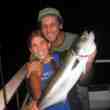The food of a younger land : a portrait of American food : before the national highway system, before chain restaurants, and before frozen food, when the nation's food was seasonal, regional, and traditional : from the lost WPA files
(Book)
394.12 FOODO
1 available
Copies
| Location | Call Number | Status |
|---|---|---|
| Central - Adult Nonfiction | 394.12 FOODO | Available |
Description
More Details
Notes
Similar Titles From NoveList
Published Reviews
Choice Review
"America Eats" was a failed endeavor of the WPA's Federal Writers' Project (FWP) in its dwindling years in the early 1940s. Originally intended to be somewhat on the scale of the WPA's "American Guide Series" of books on the individual US states, the contributions from around the country ended up in the Library of Congress when the FWP ceased. Food writer Kurlansky (The Big Oyster, CH, Nov'06, 44-1496; Salt, CH, Jul'02, 39-6398; Cod, CH, Dec'97, 35-2109) has selected the more interesting pieces from all US regions and collected them in The Food of a Younger Land. Kurlansky leaves the pieces in their original unedited form; accordingly, some works are stronger than others. Some famous writers that were part of the FWP are included here, e.g., Eudora Welty, Zora Neale Hurston, and Nelson Algren. Most of the pieces merely give readers a brief snapshot of what Americans were eating in the early 1940s, but the writing does provide a glimpse into a very different time and a different perspective on regional American cooking and eating. Summing Up: Recommended. Libraries serving academic, professional, and general readers, all levels. S. C. Hardesty Georgia State University
Booklist Review
Just what we need in hard times, recipes for booya, mullet salad, Georgia possum and taters, kush, and Montana fried beaver tail. Kurlansky, the author of best-selling books about salt, cod, and oysters, discovered these gems in a two-foot-high stack of the raw, unedited manuscripts for an inspired but never completed WPA endeavor titled America Eats. As he explains in his invigorating introduction, the Federal Writers' Project sent starving writers of all stripes (Nelson Algren, Zora Neale Hurston, Eudora Welty, and other who qualified just because they could type) across the country to gather information about American cookery and the part it has played in national life. The results are vivid and playful dispatches from pre-interstate, pre-fast-food America, when food was local and cuisine regional. Kurlansky selected zesty writings, factual and imaginative, describing barbecues, fries, and feasts; profiling families; and defining New York City luncheonette slang ( blind 'em means two eggs fried on both sides). Fun, illuminating, and provocative, this historic reclamation appears while we're in the midst of the worst financial crisis since the one Franklin D. Roosevelt fought with his job-creating stimulus package and while we're grappling with a plague of unsafe food and environmental woes associated with industrial agriculture. But don't despair. Whip up Ethel's Depression Cake, and throw a bailout party.--Seaman, Donna Copyright 2009 Booklist
Publisher's Weekly Review
A genuine culinary and historical keepsake: in the late 1930s the WPA farmed out a writing project with the ambition of other New Deal programs: an encyclopedia of American food and food traditions from coast-to-coast similar to the federal travel guides. After Pearl Harbor, the war effort halted the project for good; the book was never published, and the files were archived in the Library of Congress. Food historian Kurlansky (Cod; The Big Oyster) brought the unassembled materials to light and created this version of the guide that never was. In his abridged yet remarkable version, he presents what some of the thousands of writers (among them Eudora Welty, Zora Neale Hurston and Nelson Algren) found: America, its food, its people and its culture, at the precise moment when modernism and progress were kicking into gear. Adhering to the administrators' original organization, the book divides regionally; within each section are entries as specific as "A California Grunion Fry," and as general and historical as the one on "Sioux and Chippewa Food." Though we've become a fast-food nation, this extraordinary collection-at once history, anthropology, cookbook, almanac and family album-provides a vivid and revitalizing sense of the rural and regional characteristics and distinctions that we've lost and can find again here. (May 14) (c) Copyright PWxyz, LLC. All rights reserved
Library Journal Review
Once unique and diverse, American regional cuisine has been homogenized by franchising, globalization, and frozen foods. During the 1930s, the WPA-funded Federal Writers' Project documented local foods, preparation, and eating habits-but research was abandoned owing to the onset of World War II. Best-selling author Kurlansky (Cod; Salt) draws on the WPA files to present local recipes, essays, poetry, and lists of slang. He contextualizes the pieces and provides illustrations throughout. Verdict: With renewed public interest in the Great Depression, this fascinating portrait of American history and food culture will be popular, especially among Kurlansky's fans. [See Prepub Alert, LJ 1/09.]-Courtney Greene, DePaul Univ. Lib., Chicago (c) Copyright 2010. Library Journals LLC, a wholly owned subsidiary of Media Source, Inc. No redistribution permitted.
Booklist Reviews
Just what we need in hard times, recipes for booya, mullet salad, Georgia possum and taters, kush, and Montana fried beaver tail. Kurlansky, the author of best-selling books about salt, cod, and oysters, discovered these gems in a two-foot-high stack of the "raw, unedited manuscripts" for an inspired but never completed WPA endeavor titled America Eats. As he explains in his invigorating introduction, the Federal Writers' Project sent starving writers of all stripes (Nelson Algren, Zora Neale Hurston, Eudora Welty, and other who qualified just because they could type) across the country to gather information about "American cookery and the part it has played in national life." The results are vivid and playful dispatches from pre-interstate, pre-fast-food America, when food was local and cuisine regional. Kurlansky selected zesty writings, factual and imaginative, describing barbecues, fries, and feasts; profiling families; and defining New York City luncheonette slang ("blind 'em" means two eggs fried on both sides). Fun, illuminating, and provocative, this historic reclamation appears while we're in the midst of the worst financial crisis since the one Franklin D. Roosevelt fought with his job-creating stimulus package and while we're grappling with a plague of unsafe food and environmental woes associated with industrial agriculture. But don't despair. Whip up Ethel's Depression Cake, and throw a bailout party. Copyright 2009 Booklist Reviews.
Library Journal Reviews
The author of Cod, Salt, and The Big Oyster, Kurlansky seems well placed to write this account of a Works Progress Administration project that sent writers like Eudora Welty and Nelson Algren out in the field to chronicle America's eating habits. Copyright 2009 Reed Business Information.
LJ Express Reviews
Once unique and diverse, American regional cuisine has been homogenized by franchising, globalization, and frozen foods. During the 1930s, the WPA-funded Federal Writers' Project documented local foods, preparation, and eating habits-but research was abandoned owing to the onset of World War II. Best-selling author Kurlansky (Cod; Salt) draws on the WPA files to present local recipes, essays, poetry, and lists of slang. He contextualizes the pieces and provides illustrations throughout. Verdict: With renewed public interest in the Great Depression, this fascinating portrait of American history and food culture will be popular, especially among Kurlansky's fans. [See Prepub Alert, LJ 1/09.]-Courtney Greene, DePaul Univ. Lib., Chicago Copyright 2009 Reed Business Information.
Publishers Weekly Reviews
A genuine culinary and historical keepsake: in the late 1930s the WPA farmed out a writing project with the ambition of other New Deal programs: an encyclopedia of American food and food traditions from coast-to-coast similar to the federal travel guides. After Pearl Harbor, the war effort halted the project for good; the book was never published, and the files were archived in the Library of Congress. Food historian Kurlansky (Cod; The Big Oyster) brought the unassembled materials to light and created this version of the guide that never was. In his abridged yet remarkable version, he presents what some of the thousands of writers (among them Eudora Welty, Zora Neale Hurston and Nelson Algren) found: America, its food, its people and its culture, at the precise moment when modernism and progress were kicking into gear. Adhering to the administrators' original organization, the book divides regionally; within each section are entries as specific as "A California Grunion Fry," and as general and historical as the one on "Sioux and Chippewa Food." Though we've become a fast-food nation, this extraordinary collection—at once history, anthropology, cookbook, almanac and family album—provides a vivid and revitalizing sense of the rural and regional characteristics and distinctions that we've lost and can find again here. (May 14)
[Page 50]. Copyright 2009 Reed Business Information.Reviews from GoodReads
Citations
(2009). The food of a younger land: a portrait of American food : before the national highway system, before chain restaurants, and before frozen food, when the nation's food was seasonal, regional, and traditional : from the lost WPA files . Riverhead Books.
Chicago / Turabian - Author Date Citation, 17th Edition (style guide)2009. The Food of a Younger Land: A Portrait of American Food : Before the National Highway System, Before Chain Restaurants, and Before Frozen Food, When the Nation's Food Was Seasonal, Regional, and Traditional : From the Lost WPA Files. New York: Riverhead Books.
Chicago / Turabian - Humanities (Notes and Bibliography) Citation, 17th Edition (style guide)The Food of a Younger Land: A Portrait of American Food : Before the National Highway System, Before Chain Restaurants, and Before Frozen Food, When the Nation's Food Was Seasonal, Regional, and Traditional : From the Lost WPA Files New York: Riverhead Books, 2009.
Harvard Citation (style guide)(2009). The food of a younger land: a portrait of american food : before the national highway system, before chain restaurants, and before frozen food, when the nation's food was seasonal, regional, and traditional : from the lost WPA files. New York: Riverhead Books.
MLA Citation, 9th Edition (style guide)The Food of a Younger Land: A Portrait of American Food : Before the National Highway System, Before Chain Restaurants, and Before Frozen Food, When the Nation's Food Was Seasonal, Regional, and Traditional : From the Lost WPA Files Riverhead Books, 2009.




































